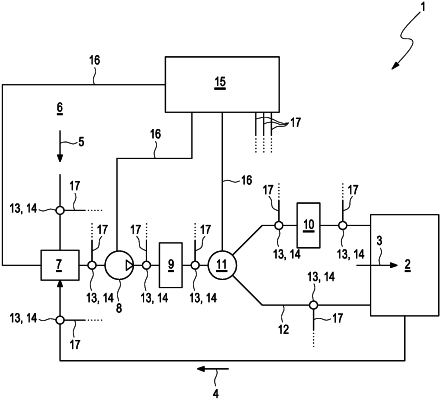| CPC F24F 11/72 (2018.01) [F24F 2110/50 (2018.01)] | 21 Claims |

|
1. A method for operating an air-conditioning system of a motor vehicle having a vehicle interior,
wherein the air-conditioning system serves for air-conditioning an air stream provided for being introduced into the vehicle interior with at least one of circulating air and fresh air, comprises a flap device that is adjustable in multiple stages with respect to the circulating air content in the air stream, a blower device that is adjustable in multiple stages with respect to its flow rate for driving the air stream in a flow direction, a main filter device for filtering the air stream, an additional filter device for filtering the air stream, a bypasser that is adjustable in multiple stages for opening and closing for bypassing the additional filter device and an air quality sensor device for detecting a current pollutant concentration in the air stream,
wherein the air-conditioning systems carries out an air quality testing cycle that comprises the following steps:
Step A: measuring the current pollutant concentration relative to a predetermined first pollutant limit value,
Step B: in response to determining that the current pollutant concentration is below the first pollutant limit value in the Step A, testing the bypasser for a completely open position or the current flow rate of the blower device for correspondence to a current air volume demand of the air-conditioning system,
Step D: in response to determining that the bypasser is not completely opened or that the current flow rate does not correspond to the current air volume demand in the Step B, measuring the current pollutant concentration relative to a predetermined second pollutant limit value that is smaller than the first pollutant limit value,
Step E: in response to determining that the current pollutant concentration is not below the second pollutant limit value, continuing the current air quality testing cycle according to Step O,
Step O: terminating the current air quality testing cycle.
|